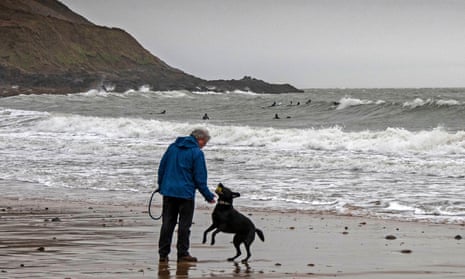Simon Garfield is a popularising writer with a light touch and a wide range of interests. His big hit was a charming and erudite book about fonts called Just My Type, but he has also written book-length studies of, among many other things, the Mini, stamp-collecting, wartime diaries, competitive wrestling, tiny things and the colour mauve.
Now it is the turn of dogs. This book is just as amiable as you’d expect from Garfield, but it’s also a bit too whimsical and wearyingly disorganised. You could write it off as a rush job done as a publishing proposition – dogs sell – except it’s odder and less cynical than that. Garfield clearly really does love dogs. Here, he writes like one. He woofs and bounds around the subject and frequently vanishes into the undergrowth in pursuit of phantom rabbits. You find yourself wishing he wore one of those collars, probably illegal, designed to concentrate the attention by delivering an electric shock when the owner presses a button.
After a bit of introductory throat-clearing about Garfield’s own dog Ludo, for instance, the opening chapter sets out to survey dogs in art history. It starts by mentioning a couple of gimmicky modern exhibitions of art by or for dogs, then lollops back and forth seemingly at random. Here’s a canine mosaic in the ruins of Pompeii (and a mention of the “Herculean” dog rescue mission, which probably should read “Herculanean”); there’s a stroll through the National Gallery in London. Here’s an anecdote from the time Garfield visited David Hockney’s studio in LA; there’s a parachute belonging to a dog soldier in Park Avenue’s Museum of the Dog in New York. He ends it by naming a “personal Top Six” dogs in art history. No 1, on which Garfield lavishes two pages, is that kitschy 19th-century painting of St Bernards smoking cigars and cheating at poker. Goya – perhaps being judged too much of a downer – gets no mention at all.

Anyway, woof, he’s off again. There follows a chapter on dog names – labrador Ludo, we learn, is officially Greatcobwood Ulysses – where he splatters a series of statistics on to the page like muddy paw prints. In 2017 the most popular names for male British dogs were Alfie, Charlie, Max and Oscar. In 2016, there were 152 dogs called Biggie living in New York. The French system for pedigree names – “a reliable combination of simplicity and totalitarianism” – is to give the names a particular initial for the year of birth. In 1972 the letters K, Q, W, X, Y and Z were retired on the grounds of it being hard to find enough names that weren’t Klaxon, Yves and Zut. Then: “The naming of dogs stretches back to the ancients.” We get a list of Xenophon’s dog names. And a list of the names of the Queen’s corgis, handy for pub quizzers. Then an anecdote about a dog called Fido, who does the Greyfriars Bobby thing (we meet the original Greyfriars Bobby 200 pages later). And, woof, that chapter’s over and he’s on to the next.
There are chapters on evolution and canine behaviour, what Darwin thought about them, and how they respond to music (with the inevitable footnote about Snoop and Li’l Bow Wow); on the animals’ association with healing (Garfield tours London’s Whittington Hospital with a “therapy dog” called Bryn and reports that patients are pleased to see him); on dogs that can do clever tricks (including a couple of pages on Laika, whose main trick was being sent fatally into space); a chapter on selective breeding and the invention of the Labradoodle; and so on. It’s sometimes hard to summarise what a chapter is about, they wander so.
On page 139 Garfield is ambling around a dog show marvelling at the wacky things you can buy for your dog (snacks made from Himalayan yak milk; “Cold Pressed Fish Supper … with turmeric, linseed oil, yucca and apple cider vinegar”); and then on page 285 he’s ambling around another dog show marvelling at the wacky things you can buy for your dog (“lamb hotpot … with chia seeds, kelp, turmeric, banana, salmon oil, and added vitamins A and D, zinc, iron, manganese and copper”).
There’s a chapter on dogs in literature, in which Garfield pronounces Bill Sikes’s dog Bullseye the western canon’s best in show. But it’s two chapters later that he gives us his bits on Snoopy and Fred Bassett, before plunging into a follow-your-nose digression on the dogs of Instagram and the noisome neologisms of WeRateDogs (“doggos”, “boopability”, “floof”). By the time you get multiple pages transcribing imaginary conversations Garfield has invented between Ludo and other dogs on Hampstead Heath, you start to wonder if he has screwed the pooch. So to speak.
If you’re in the market for 300-odd pages of mostly interesting things that Garfield has thought, invented or Googled about dogs, slapped down in no particular order, then Dog’s Best Friend will be your jam. Me, I thought it was a bit of a dog’s breakfast.
